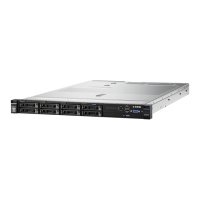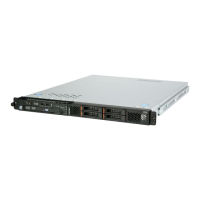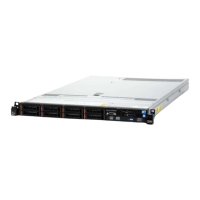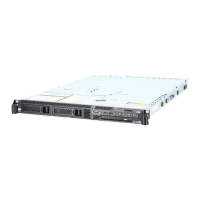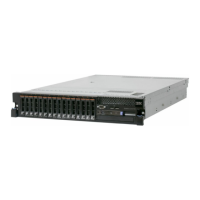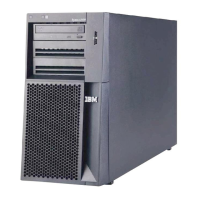Installing an adapter
The following notes describe the types of adapters that the server supports and
other information that you must consider when you install an adapter:
v Locate the documentation that comes with the adapter and follow those
instructions in addition to the instructions in this section.
v The server provides one SAS/SATA RAID riser-card slot on the system board.
See “System-board optional device connectors” on page 22 for the location of the
SAS/SATA RAID riser-card slot. The ServeRAID-BR10il v2, ServeRAID-M1015,
ServeRAID-M5014, or ServeRAID-M5015 adapter comes installed on some
models of the server. You can replace the IBM ServeRAID SAS/SATA adapter
with an optional IBM ServeRAID SAS/SATA adapter in the slot. For configuration
information, see the ServeRAID documentation at http://www.ibm.com/systems/
support/,
Important: To ensure that any of your ServeRAID 10i, 10is, or 10M adapters
function properly on UEFI-based servers, make sure that the adapter firmware
level is updated to at least 11.x.x-XXX , and the supporting drivers.
Attention: Some cluster solutions require specific code levels or coordinated
code updates. If the device is part of a cluster solution, verify that the latest level
of code is supported for the cluster solution before you update the code.
v Do not set the maximum digital video adapter resolution above 1600 x 1200 at
75 Hz for an LCD monitor. This is the highest resolution that is supported for any
add-on video adapter that you install in the server.
v Any high-definition video-out connector or stereo connector on any add-on video
adapter is not supported
v The server does not support full-length, full-height PCI-X adapters or legacy 5 V
PCI adapters.
v When you install any PCI adapter, the power cords must be disconnected from
the power source before you remove the PCI Express riser-card assembly and
the PCI-X riser-card assembly. Otherwise, the active power management event
signal will be disabled by the system-board logic, and the Wake on LAN feature
might not work. However, after the server is powered-on locally, the active power
manager active power management event signal will be enabled by the
system-board logic.
v If you switch the PCI adapter from slot 1 riser assembly to slot 2, you will need to
remove the screw from the standard bracket and then replace the standard
bracket with the low-profile bracket.
v The server provides two PCI riser-card slots on the system board. A PCI riser
assembly with a bracket is installed in slot 2. The following information indicates
the riser-card slots and the type of adapters that the riser cards support:
– Standard models of the server come with two PCI Express riser-card
assemblies installed. If you want to replace them with PCI-X riser-card
assemblies, you must order the PCI-X riser-card assembly option, which
includes the bracket.
– A PCI Express riser-card assembly has a black connector and supports PCI
Express adapters, and a PCI-X riser-card assembly has a white (light in color)
connector and supports PCI-X adapters.
– PCI riser slot 1 (the farthest slot from the power supplies). This slot supports
only low-profile adapters.
– PCI riser slot 2 (the closest slot to the power supplies). This slot supports only
full-height, half-length adapters. You must install a PCI riser-card assembly in
slot 2 even if you do not install an adapter.
The following table lists the supported configurations for the PCI rise-cardr slots.
180 IBM System x3550 M3 Types 4254 and 7944: Problem Determination and Service Guide
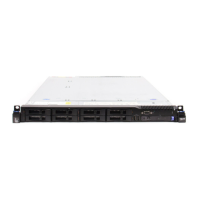
